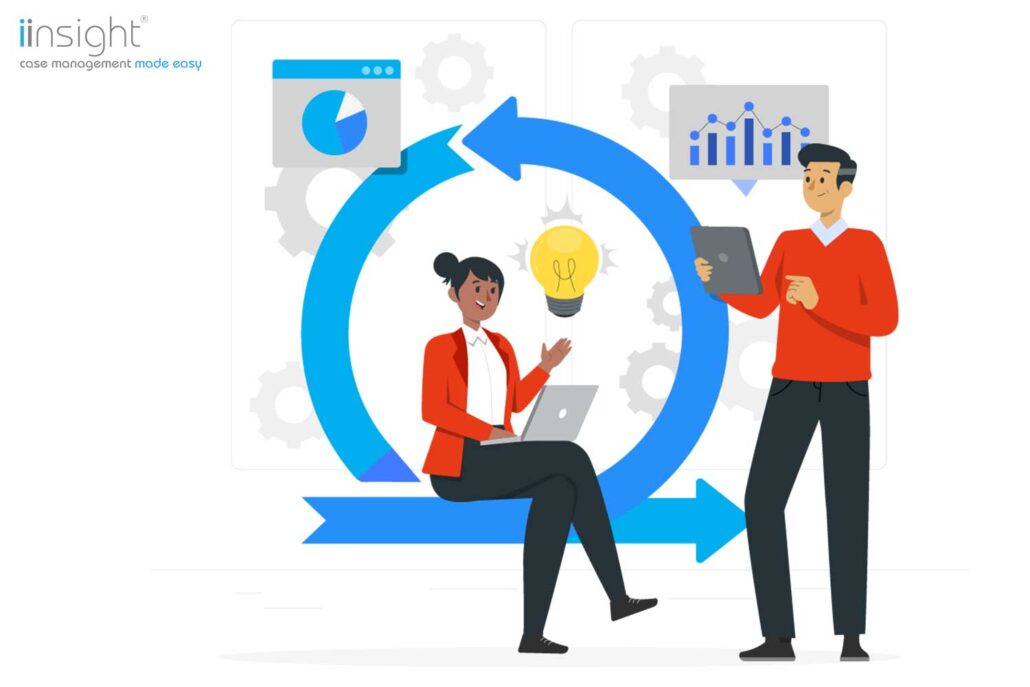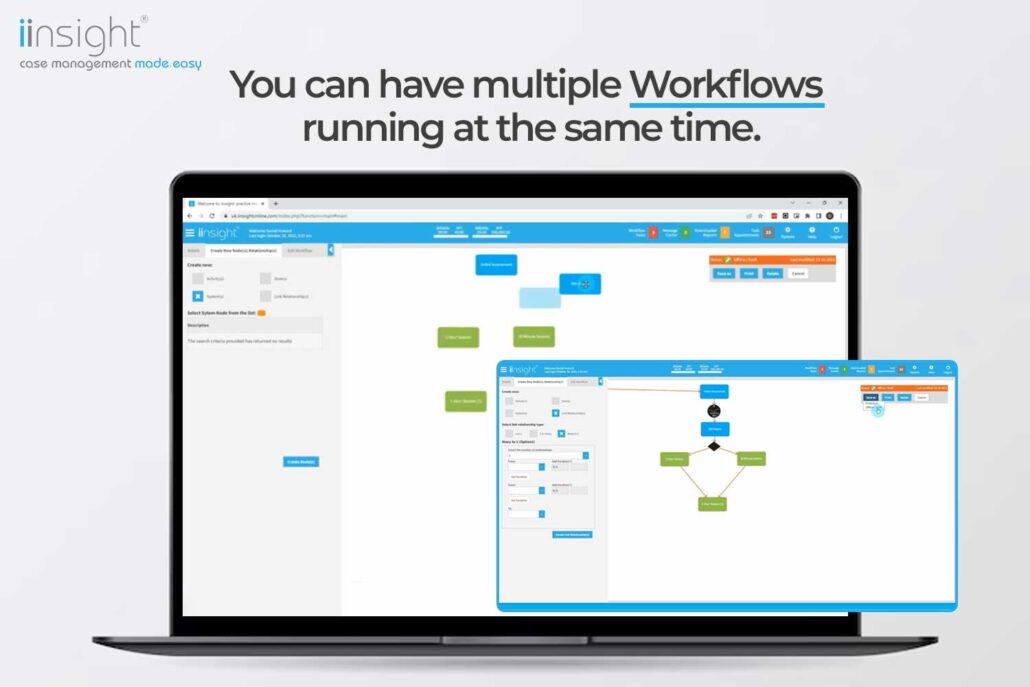
Use the iinsight® practice management platform to create the best workflows for the unique needs of your practice and ensure the whole team is following your standardised processes.
Advantages of Using iinsight® for Workflow Management
- Increase Efficiency: Save time and reduce errors by using iinsight to automate many of the manual processes involved in managing cases like scheduling appointments, sending notifications and uploading case notes. Focus on more important tasks by automating workflows.
- Improve Compliance: Assure all necessary steps are followed consistently to comply with regulations by setting up automated workflows to adhere to your standard operating procedures.
- Achieve Consistency: Ensure all tasks are completed consistently across departments and locations by creating standardised workflows to help maintain quality and reduce variations in output.
- Boost Collaboration: automated workflows make it easy to assign tasks and responsibilities to team members, improve communication and teamwork, keeping everyone on the same page to achieve common goals.
- Promote Transparency and Accountability: track performance and monitor progress in real time with iinsight’s automated workflows. Identify issues early to make decisions based on accurate and timely data.
What are Workflows?
Workflows are a series of tasks completed in a particular order to achieve a specific goal. They can be simple or complex, involving multiple people, departments, and systems. Workflows help ensure that tasks are completed consistently and on time, leading to increased productivity and customer satisfaction.
Make sure your business operates efficiently and effectively by using iinsight software to create and automate workflows.

Benefits
- By automating repetitive tasks and eliminating manual processes, you can save time. This can lead to increased efficiency and productivity, which can ultimately translate into cost savings and improved profitability.
- Help reduce the risk of errors and ensure all regulatory requirements are met. Workflows can be designed to ensure all necessary steps are completed in the correct order, and all required documentation and approvals are obtained.
- The ability to create small workflows that are part of a larger workflow can be incredibly beneficial. This allows you to break down complex processes into smaller, more manageable steps. Each step can be assigned to the appropriate person or department, with clear deadlines and requirements so each step is completed correctly and on time A clear and consistent process makes it easier to identify areas for improvement and optimise workflows for even greater efficiency.

Easy to use
Our experts pride themselves on making the iinsight platform easy to use. When you become an iinsight user, we help to set up workflows for your existing clients. Then the process for setting up workflows for new referrals is simple.
You are in control of structuring workflows using intuitive ‘drag and drop’ and drop-down options. You select the options that will become the steps in the workflow. You decide the time scales between workflow actions and decision points. You can create multiple workflows for one case and interlink smaller workflows. Practitioners will be reminded of targets and processes, and Team Leaders will be notified of overdue actions. Everyone will be on the same page!












